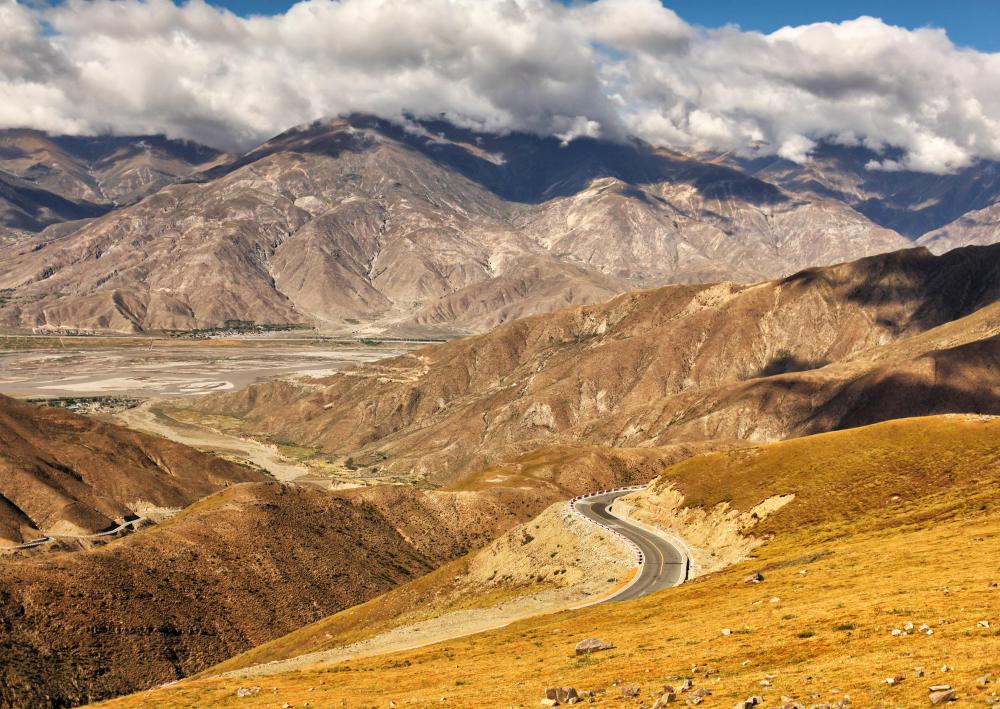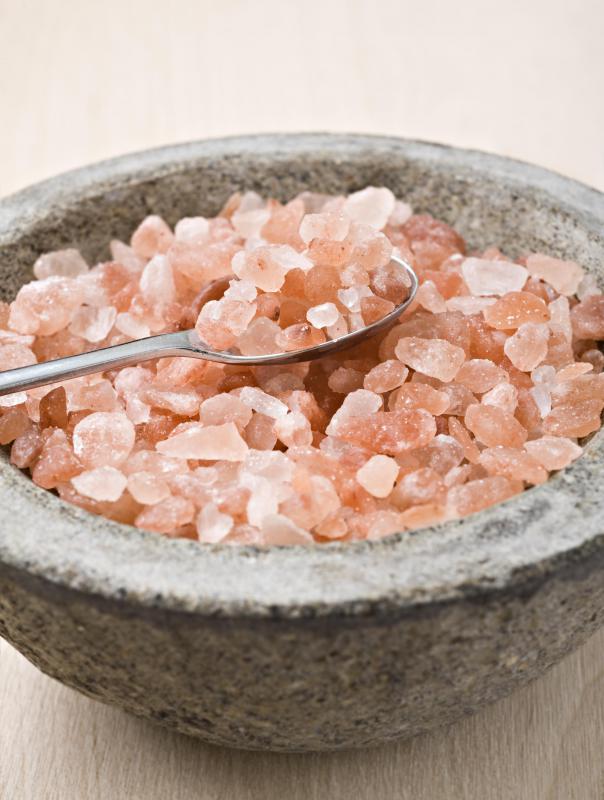At TheHealthBoard, we're committed to delivering accurate, trustworthy information. Our expert-authored content is rigorously fact-checked and sourced from credible authorities. Discover how we uphold the highest standards in providing you with reliable knowledge.
What are the Health Benefits of Himalayan Pink Salt?
Himalayan pink salt is hand-mined and harvested from sea salt deposits found around the foothills of the Himalayan mountains. This pure, pink-tinged salt is thought to be beneficial to health, as it can contain up to 84 trace elements and minerals such as potassium, iron, calcium, and copper. As a therapeutic agent, this salt is said to help soothe sore muscles, support healthy vascular and respiratory functions, reduce the appearance of aging and cellulite, and ease problems with skin irritation. Although this salt may be healthy in many ways, consuming it in large quantities is not recommended; as with any other variety of salt, eating too much can lead to health problems.
Of the many potential health benefits of Himalayan pink salt, its use in nutrition and hydration is probably best known. As a hydrator, this salt is said to help attract moisture to cells in the body. Nutritionally, it may help the body maintain balance, which can be help fight off the spread of germs. In addition, the high content of minerals is said to help the body absorb the vitamins and nutrients in food and supplements.

Himalayan pink salt is also widely believed to purify and replenish the body. When certain substances, such as salt and electrolytes, are lost after physical activity, the muscles can become sore and stiff. Soaking in this salt is said to help replace these lost substances, which can aid in the relief of muscle tissue. Bathing in or drinking a tonic of salt water can also help purify the system by flushing toxins and relieving constipation.

The sinuses and respiratory tract may also find some relief with the use of Himalayan pink salt. Salt lamps and inhalers are said to help clean the air and clear the lungs of pollutants and bacteria, which can be especially beneficial to those suffering from bronchitis or asthma. Clogged or infected sinuses may benefit from a saline solution of this salt, as it may not only clear out mucus, but may help sweep away bacteria.

In addition to internal health benefits, Himalayan pink salt also has many external uses. It can be used to treat psoriasis, rashes, and eczema. Cosmetically, this salt is thought to help reduce cellulite, and may also help the skin retain moisture.
AS FEATURED ON:
AS FEATURED ON:


















Discussion Comments
Drentel - It's natural to have doubts about new remedies and cures. There are so many new herbs and products hitting the market that a little skepticism is wise. However, given what we know about salt in general, there seems to be no great risk in using the Himalayan crystals in place of some of the ways we use salt now.
You don't have to suddenly start ingesting more salt because you think it is going to cure what ails you. Too much of any substance taken into your body is going to cause problems, even water.
To use your example obtained from the article, substitute the pink salt for the white salt you normally use to treat your sinuses and see whether you see or feel a difference.
Does this sound like the miracle drug of the month to anyone else? When people find something a little different they are in such a rush to make it more than it actually is. I'm not saying the Himalayan pink crystal salt is not good for certain ailments, but so is regular salt or sea salt.
I think it's great that the article pointed out that this pink salt can be harmful if too much is consumed. Also, the article mentioned how pink salt can help with sinus infections. This makes sense to me because regular white salt is good for sinus infections, too.
Post your comments